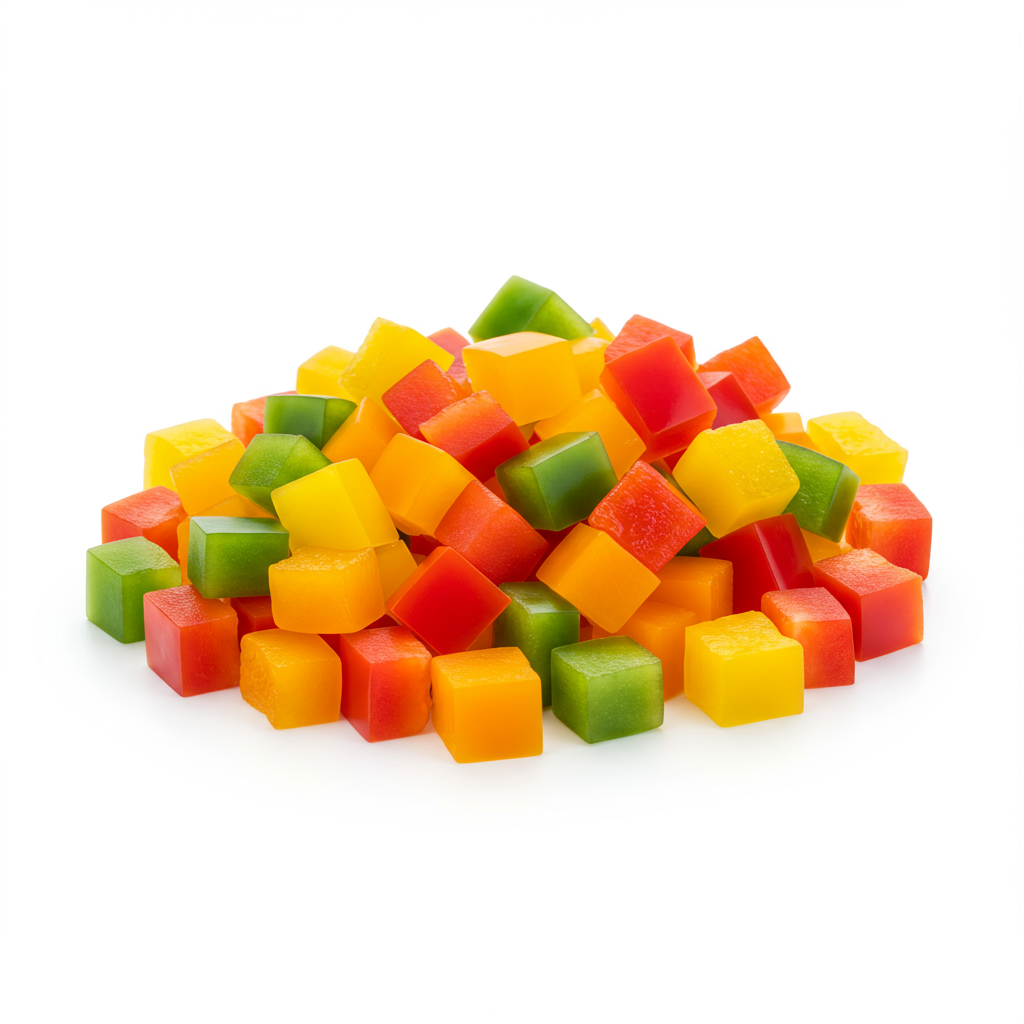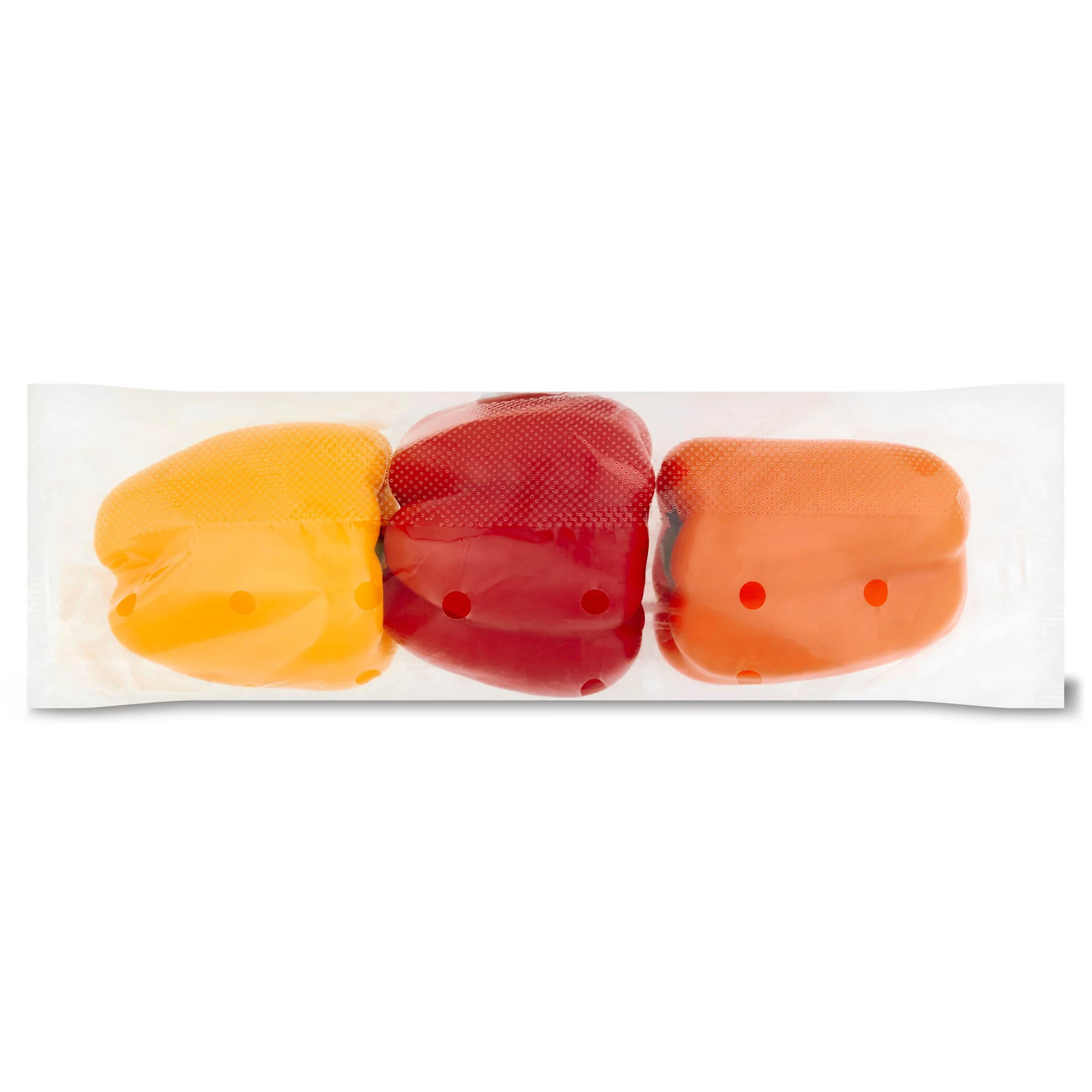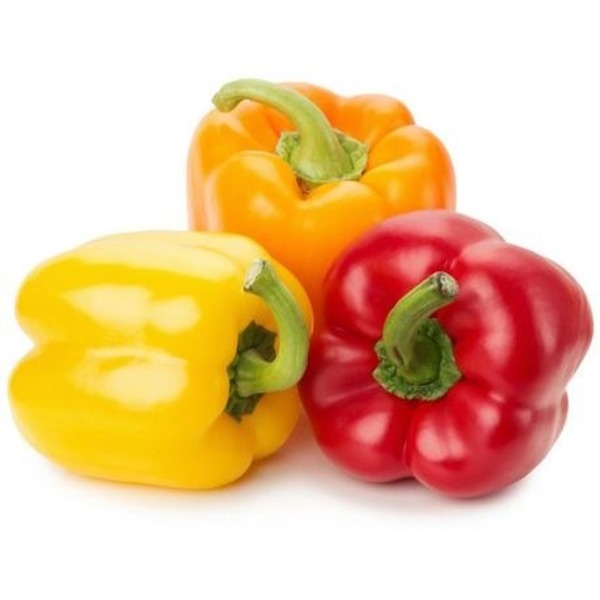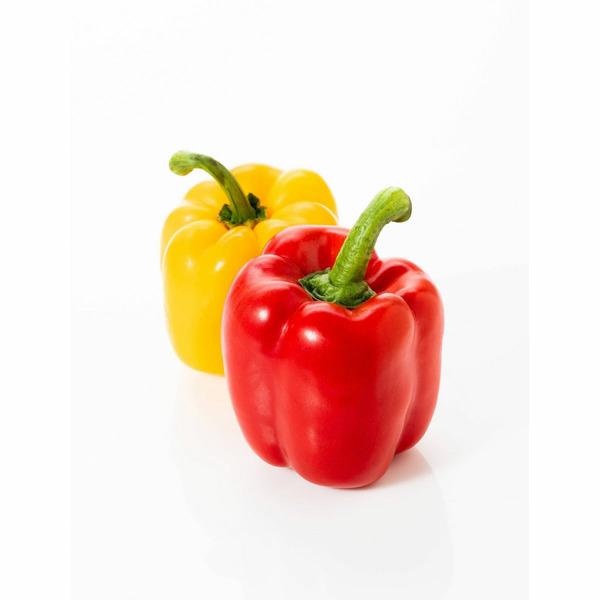SALADS
MAIN DISHES
SIDE DISHES
Bell Pepper
Bell peppers, scientifically named Capsicum annuum, are a versatile and colorful vegetable belonging to the nightshade family. Available in a variety of colors such as green, red, yellow, and orange, their mild yet distinct taste makes them a popular ingredient in a wide range of dishes.
In home cooking, bell peppers are often used raw in salads, as a topping on pizzas, and as a component in stir-fries and fajitas. They can also be stuffed, grilled, or roasted to highlight their natural sweetness. With a high nutritional value, bell peppers provide essential vitamins and antioxidants to support overall health.
80%
CARBS
0%
FAT
20%
PROTEIN
3,747 Bell Pepper Products
Wegmans Mixed Peppers, 6 Pack, FAMILY PACK
Wegmans Mixed Peppers, FAMILY PACK
Wegmans Organic Mixed Peppers, FAMILY PACK
Pero Freshwrap Stoplight Peppers
Multi-Colored Peppers, Package
Good & Gather Tri-Colored Bell Peppers
H-E-B Select Ingredients Sunrise Peppers
Fresh Organic Color Bell Peppers, 2 Count
Multi-Colored Peppers, Package
Organic Rainbow Bell Peppers - 2ct
Used In 573 Recipes
4
Fiesta Beans and Rice Skillet
5
Flavorful Veggie Ramen Delight
2
Korean-Style Ground Beef Stir Fry
5
Lemony Herb Chicken and Veggie Kabobs
2
Tropical Ham and Pineapple Fried Rice
5
Cheesy Salsa Verde Chicken-Stuffed Bell Peppers
3
Creamy Delight Chicken and Cheese Stuffed Bell Peppers
7
French Bread Cheesesteak Pizza
Bell Pepper Is Frequently Used With
Bell Pepper FAQ
Bell peppers are a highly versatile ingredient that can bring color, crunch, and a sweet mild flavor to various dishes. The common issues people encounter when cooking with bell peppers usually stem from not knowing how to properly select, prep, or cook them.
For selection, look for bell peppers that are firm with glossy skins and free of blemishes. Since they are available in a multitude of colors, choose ones that suit the flavor profile of your dish. Each color has subtle taste differences; green ones are slightly bitter, while red, orange, and yellow ones are sweeter.
Regarding prep work, many are unsure of how to correctly cut a bell pepper. To make it easier, cut off the top and bottom, remove the stem and seeds, then slice or dice the remaining pepper.
When it comes to cooking, understanding how the heat affects the flavor is essential. Quick cooking methods, like stir frying or sautéing, maintain their crunchy texture. Longer cooking situations, like roasting or slow cooking, makes them sweet and tender.
A notable kitchen hack for bell peppers is to roast them to enhance their sweetness, ease digestion, and even make the skin easier to peel if you're not a fan of its texture. A lesser-known fact is that you can freeze bell peppers — just slice, remove seeds, and store them in a freezer-safe bag. This allows you to have them on hand for later use when required.
What's the difference between green, yellow, red, and orange bell peppers?
How do I cut a bell pepper?
Can I eat bell pepper seeds?
Can I use bell peppers in a salad?
What is the best way to roast bell peppers?
Can I stuff bell peppers and if so, how?
Why do my bell peppers taste bitter?
Can I freeze bell peppers?
How does the cooking method affect the flavor of bell peppers?
How to remove the skin from a roasted bell pepper?
Expiration & Storage Tips
When does bell pepper expire?
Like many vegetables, bell peppers do not have a specific expiration date and instead should be used as fresh as possible for the best flavor and nutritional value. However, when stored properly, unopened bell peppers can last from 1 to 2 weeks in the fridge. Once cut, they should be consumed within 3 days. As for frozen bell peppers, expect them to stay good for 10-12 months.
How do you tell if bell pepper is bad?
Checking if a bell pepper has gone bad is simple. Firstly, look for any visible signs of decay or damage, such as dark spots, mold, or wrinkles on the skin. A shriveled appearance or a dull, fading color can also hint at old age. When you squeeze the pepper, it should feel firm; if it's soft or wrinkled, it's probably past its best. Smell is another useful tool, if there is a strange, foul or fermented smell, it has gone bad.
Tips for storing bell pepper to extend shelf life
• Keep bell peppers in the crisper drawer of your fridge. This area maintains the ideal humidity level to keep them fresh.
• Don't wash the peppers until you're ready to use them. Moisture can encourage mold growth.
• Cut bell peppers should be stored in a sealed container or plastic bag. You can add a paper towel to absorb any excess moisture.
• If you want to freeze bell peppers, wash, core, and cut them into your desired size. Blanching isn't necessary. Once they're dry, lay them flat in a single layer on a baking sheet, freeze, and then transfer to a freezer-safe bag or container. This method helps prevent the peppers from sticking together.
• Always allow frozen bell peppers to thaw in the refrigerator to maintain texture and flavor.
• Rotating your stock, using the 'first in, first out' principle, ensures the older peppers are used first.
EXPIRES WITHIN
11 - 21
DAYS
Substitutes

Mini Sweet Pepper

Cut Bell Pepper

Diced Bell Pepper

Diced Green Bell Pepper

Poblano Pepper

Shishito Pepper

Sliced Peppers

Diced Green Chile

Hungarian Pepper

Piquillo Pepper
See All
Health Info
Macros
5g
CARBS
0g
FAT
1g
PROTEIN
Allowed on these diets
LOW FAT
HIGH CALCIUM
VEGETARIAN
KETO
PALEO
WHOLE 30
MEDITERRANEAN
LOW CARB
VEGAN
LACTOSE FREE
GLUTEN FREE





































